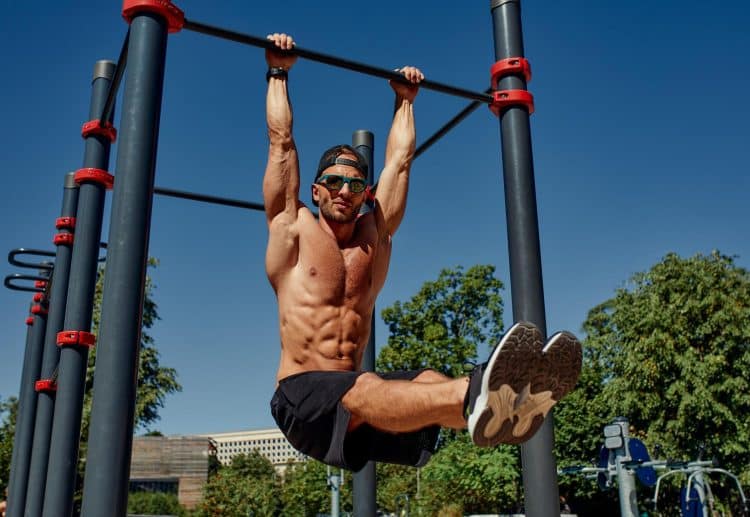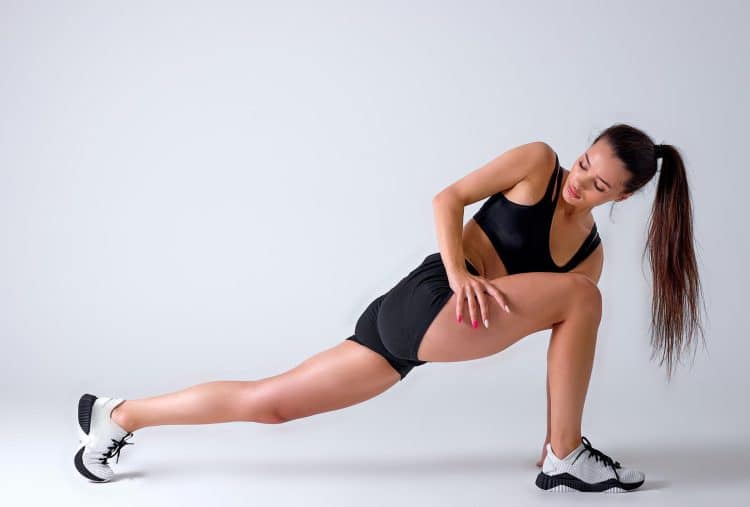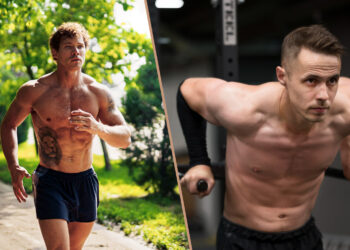Are you looking for an alternative to going to the gym? We’ve got the solution!
Calisthenics is an ancient form of exercise that’s particularly relevant in the 21st century. Modern life is busy, and many people do not have the time or opportunity to work out in a commercial gym. As such, exercise rates are low, and obesity and poor fitness levels are on the rise.
The good news is that there is a solution, and it’s called calisthenics or bodyweight training. With calisthenics, your body is your gym, and you can work out almost anywhere and anytime you wish. This removes several major barriers to exercising consistently, making it far easier to achieve your health and fitness goals.
In this comprehensive article, we reveal the best calisthenic exercises for each muscle group and explain how to combine them to create effective bodyweight workouts.
What is Calisthenics, Anyway?
Most people are familiar with calisthenics, even if they don’t know the name. That’s because many of the most popular and widely performed exercises come from the world of bodyweight training.
Level Up Your Fitness: Join our 💪 strong community in Fitness Volt Newsletter. Get daily inspiration, expert-backed workouts, nutrition tips, the latest in strength sports, and the support you need to reach your goals. Subscribe for free!
The word calisthenics comes from the Greek words kallos, meaning beauty, and sthenos, meaning strength. It’s been practiced for as long as people have been working out and is as relevant today as it was in ancient Greece.
Popular calisthenic exercises include:
Calisthenic Benefits
Not sure if calisthenics training is right for you? Consider these benefits and then decide!
Accessibility: Calisthenics exercises can be performed anywhere, requiring little to no equipment. This makes it an accessible and convenient way to stay fit, whether at home, in the park, or on the road.
Adaptable: You can use calisthenics to train for any fitness goal, from building muscle to improving your endurance to losing fat. It’s a very versatile workout.
Full-Body Workout: Many calisthenics exercises engage multiple muscle groups simultaneously, providing a comprehensive workout that can improve overall strength, flexibility, and coordination.
Cost-Effective: Since calisthenics often requires minimal equipment, it’s a budget-friendly option for those looking to get in shape without investing in a gym membership or expensive home gym equipment.
Promotes Functional Fitness: Calisthenics focuses on natural, compound movements that translate to everyday activities, enhancing functional fitness and reducing the risk of injury in daily life.
Modifiable For All Fitness Levels: Whether you’re a beginner or an advanced exerciser, calisthenics can be scaled to individual fitness levels, making it an inclusive form of exercise.
Enhances Mind-Body Connection: The focus on controlled, deliberate movements in calisthenics helps develop a strong mind-body connection, improving body awareness and mental focus. This includes better balance and coordination.
Safety: With no heavy weights to drop, calisthenics can be a lot safer than conventional weightlifting exercises. You can train alone with minimal risk of injury, and many calisthenic movements are easy on the joints and connective tissues.
Improves Mobility and Flexibility: Calisthenics enhances both mobility and flexibility. This not only improves overall athletic performance but also contributes to better posture and reduced risk of muscle imbalances.
Calisthenic Drawbacks
There are also a few drawbacks to calisthenics, but for most people, these drawbacks are far outweighed by the benefits:
Difficulty Getting Started for Beginners: Foundational exercises like push-ups and pull-ups can be challenging for beginners. Without proper modifications or guidance, this initial difficulty may discourage those new to fitness from continuing with calisthenics.
May Not Be Ideal for Bodybuilding: While calisthenics can build strength and muscle, it may not provide the targeted resistance needed for serious bodybuilding. Conventional weight training might be a more practical choice for those with specific bodybuilding goals.
Progression Often Means More Reps: In calisthenics, progressing in strength and endurance may sometimes mean simply doing more repetitions of an exercise. This approach might not be as satisfying or effective for all individuals, especially those looking to build strength.
May Not Target All Muscle Groups Equally: While calisthenics can provide a full-body workout, some muscle groups might not be targeted as effectively as others. This could lead to imbalances if not supplemented with additional exercises or training methods.
Best Exercises by Muscle Group
No calisthenic exercise library can be entirely complete, and exercise names can vary, too. However, this is a list of the most popular calisthenic movements using their most widely accepted names.
This list of exercises is a great place to start for anyone looking to get into calisthenics training. For ease, we’ve grouped the exercises into muscle groups so you can choose the best movement for the body part you want to train:
- Back
- Chest
- Shoulders
- Biceps
- Triceps
- Legs
- Core
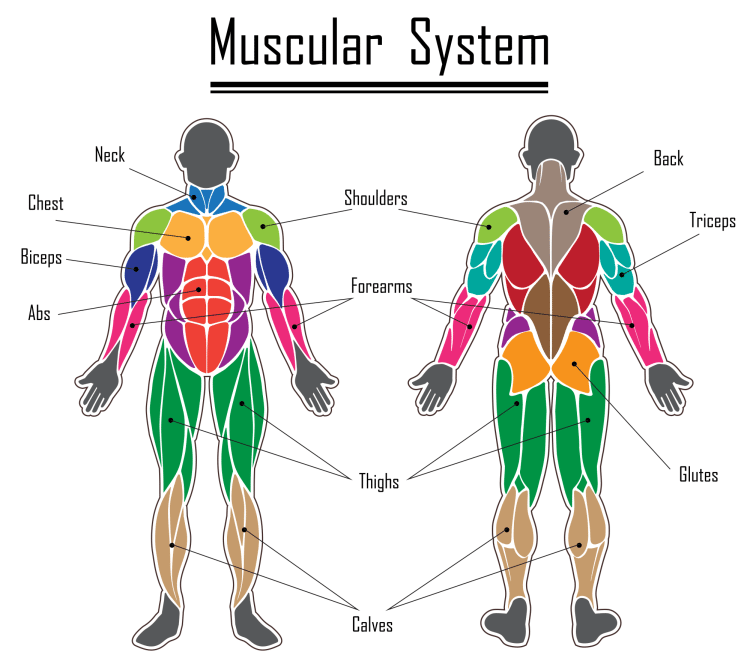
Calisthenic Back Exercises
Your back muscles are out of sight, but they should never be out of mind. Not training your back as much as your front can lead to muscle imbalances, lower back pain, poor posture, and injuries. So, regardless of your training goals, make sure you work your back as hard as those muscles you can see in the mirror!
- Inverted rows (using a low bar or TRX)
- Australian pull-ups
- Scapular shrugs
- Negative pull-ups
- Assisted pull-ups (using bands or a machine)
- Pull-ups
- Chin-ups
- Wide grip pull-ups
- Weighted pull-ups/chin-ups
- Archer pull-ups
- Typewriter pull-ups
- One-arm assisted pull-ups
- Front lever
- One-arm pull-ups
Calisthenic Chest Exercises
Most people are more than familiar with several effective calisthenics chest exercises – push-ups and dips. Still, there are plenty more movements you can use to sculpt the chest of your dreams. These include:
- Incline push-ups (hands on a bench or elevated surface)
- Kneeling push-ups
- Regular push-ups
- Diamond push-ups
- Decline push-ups (feet elevated)
- Wide grip push-ups
- Parallel bar dips
- Ring dips
- Dive bomber push-ups
- Pseudo planche push-ups
- Archer push-ups
- One-arm push-ups
- Clapping push-ups
- Back lever
- Planche push-ups
Calisthenic Shoulder Exercises
Every chest and back exercise works your deltoids, better known as your shoulder muscles. However, some bodyweight movements target your shoulders more directly than others. These include:
- Pike push-ups
- Incline pike push-ups (using a bench or elevated surface)
- Wall walks
- Handstand push-ups (against a wall)
- Dive bomber push-ups
- Pseudo planche push-ups
- Parallel and ring dips
- Planche push-ups
Calisthenic Biceps Exercises
Your biceps are strongly involved in every pulling exercise you perform. However, these are the exercises that provide your biceps with the best possible workout:
- Inverted rows (using a supinated grip)
- Chin-ups (using a close grip)
- Negative chin-ups
- Assisted one-arm chin-ups (using bands for assistance)
- One-arm chin-ups
- Pelican curls (on rings or a bar)
- Ring bicep curls
Calisthenics Triceps Exercises
In the same way that most back exercises also work your biceps, the majority of chest and shoulder movements also hit your triceps. However, these are the most triceps-centric calisthenic exercises:
- Bench dips (using a bench or elevated surface)
- Parallel bar dips
- Ring dips
- Close grip push-ups
- Diamond push-ups
- Decline diamond push-ups (feet elevated)
- Pike push-ups
- Tiger bend push-ups
- Handstand push-ups (against a wall)
- Skull crushers (using a bar or rings)
Calisthenic Leg Exercises
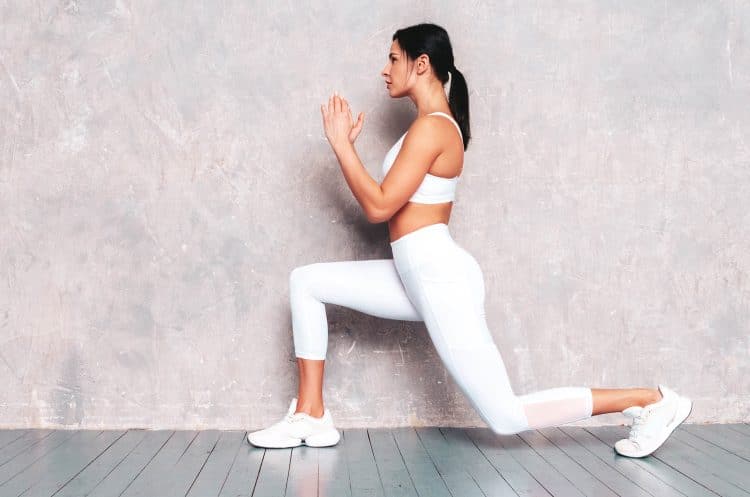
Friends don’t let friends skip leg day, or so the popular meme says! Any well-designed calisthenic training program should include as much leg work as it does for your upper body. Not training your legs can create a very unbalanced, unathletic physique. Build your glutes, hamstrings, and quadriceps with these calisthenic lower body exercises:
- Bodyweight squats
- Lunges
- Reverse lunges
- Lateral lunges
- Bulgarian split squats
- Step-ups
- Glute bridges
- Single-leg glute bridges
- Single-leg Romanian deadlifts
- Pistol squats
- Jump squats
- Box jumps
- Sissy squats
- Nordic hamstring curls
- Shrimp squats
- Calf raises
- Single-leg calf raises
- Hill sprints
Calisthenic Core Exercises
Core is the collective term for the muscles of your midsection. These muscles work together to stabilize your lumbar spine, preventing unwanted movements when you’re doing things like push-ups, pull-ups, and squats. However, the best way to strengthen your core is to target it directly, and these are some of the best calisthenic exercises for the job:
Flexion (Rectus Abdominus):
- Crunches
- Leg raises
- Bicycle crunches
- Russian twists
- Plank
- Hollow body hold
- V-ups
- Hanging leg raises
Rotation/Lateral Flexion (Obliques):
- Oblique crunches
- Side plank
- Windshield wipers
- Side plank with rotation
- Mason twists
- Standing oblique crunches
Extension (Erector Spinae):
- Superman
- Reverse hyperextensions
- Bird-dog
- Back bridge
Calisthenic Skill Exercises
Some calisthenic exercises are designed to challenge and improve your athletic and gymnastic skills rather than develop a specific muscle or body part. As such, these exercises are often difficult to classify, so we’ve put them together in this final list. Needless to say, some of these exercises are extremely demanding and should only be attempted once you’ve built your strength with basic calisthenics:
Level Up Your Fitness: Join our 💪 strong community in Fitness Volt Newsletter. Get daily inspiration, expert-backed workouts, nutrition tips, the latest in strength sports, and the support you need to reach your goals. Subscribe for free!
- L-sit (core, hip flexors, quads)
- Muscle-ups (shoulders, chest, triceps, back, core)
- Skin-the-cats (shoulders, back, core)
- Human flag (shoulders, obliques, lats, core)
- Front lever (back, shoulders, core)
- Back lever (chest, shoulders, core)
- Planche (shoulders, chest, triceps, core)
- Handstand (shoulders, triceps, core)
- Iron cross (on rings; shoulders, chest, core)
- Dragon flag (core, lats, glutes)
- One-arm handstand (shoulders, triceps, core)
How to Design a Calisthenic Workout
We’ve armed you with 101 (yes, we counted them!) of the best calisthenic exercises around, with plenty of movements to choose from for each major muscle group. But how do you turn this laundry list of exercises into an effective training routine?
We’re here to show you how!
Firstly, you need to choose the type of workout you want. Your options are a full-body workout or a split routine, where you train different muscles on different days. Both options can be effective, so use the one you think you’ll be able to stick to, and that you’ll enjoy.
Once you’ve picked your program type, all you need to do is slot your chosen calisthenic exercises into the appropriate template.
Put the most challenging movements near the beginning of each workout and the easier ones near the end. Remember, all exercises are listed in approximate order of difficulty. This will ensure that you’ll be able to put maximum effort into every part of your program.
Warming Up
Before attempting any of these workouts, you must first prepare your muscles and joints with a warm-up. This will help reduce your risk of injury and make your training more productive.
A good calisthenics warm-up comprises the following stages:
- Pulse raise – e.g., 5-10 minutes of light cardio.
- Mobility exercises – e.g., shoulder shrugs, arm circles, and knee bends
- Dynamic stretches – e.g., leg swings, butt kickers, and waist twists
- Practice sets – e.g., 1-2 easy sets of your first couple of exercises
You should now feel warm and ready to face your coming workout!
You can read more about how to warm up for strength training here.
Template One – Full Body Workout
Do your full-body workout 2-3 times per week. You can repeat the same program each time you train or, if you prefer, create several different routines and use them in rotation.
| # | Exercise | Sets | Reps | Recovery |
| 1 | Leg 1 | 2-4 | AMRAP | 60-90 seconds |
| 2 | Chest | 2-4 | AMRAP | 60-90 seconds |
| 3 | Back | 2-4 | AMRAP | 60-90 seconds |
| 4 | Legs 2 | 2-4 | AMRAP | 60-90 seconds |
| 5 | Shoulders | 2-4 | AMRAP | 60-90 seconds |
| 6 | Back | 2-4 | AMRAP | 60-90 seconds |
| 7 | Triceps* | 2-4 | AMRAP | 60-90 seconds |
| 8 | Biceps* | 2-4 | AMRAP | 60-90 seconds |
| 9 | Core 1 | 2-4 | AMRAP | 60-90 seconds |
| 10 | Core 2 | 2-4 | AMRAP | 60-90 seconds |
Program notes: *Triceps and biceps exercises are optional as these muscles are indirectly involved in all other upper body exercises. AMRAP means as many reps as possible, so just pump out as many as you can in good form, striving to do more reps week-by-week as you get stronger.
Template Two – Split Routine
This program involves splitting your body down into individual muscle groups so you can do more exercises for each one. This is useful for hypertrophy as it means you can accumulate more sets and reps for each body part. However, you will need to work out more often – four times per week in this case:
| Monday | Tuesday | Wednesday | Thursday | Friday | Saturday | Sunday |
| Chest and back | Legs and core | Rest | Shoulders and arms | Legs and core | Rest | Rest |
Workout 1 – Chest and Back
| # | Exercise | Sets | Reps | Recovery |
| 1 | Chest 1 | 2-4 | AMRAP | 60-90 seconds |
| 2 | Back 1 | 2-4 | AMRAP | 60-90 seconds |
| 3 | Chest 2 | 2-4 | AMRAP | 60-90 seconds |
| 4 | Back 2 | 2-4 | AMRAP | 60-90 seconds |
| 5 | Chest 3 | 2-4 | AMRAP | 60-90 seconds |
| 6 | Back 3 | 2-4 | AMRAP | 60-90 seconds |
| 7 | Chest 4 (optional) | 2-4 | AMRAP | 60-90 seconds |
| 8 | Back 4 (optional) | 2-4 | AMRAP | 60-90 seconds |
Workout 2 – Legs and Core
| # | Exercise | Sets | Reps | Recovery |
| 1 | Legs 1 (quads) | 2-4 | AMRAP | 60-90 seconds |
| 2 | Legs 2 (hamstrings) | 2-4 | AMRAP | 60-90 seconds |
| 3 | Legs 3 (glutes) | 2-4 | AMRAP | 60-90 seconds |
| 4 | Legs 4 (optional) | 2-4 | AMRAP | 60-90 seconds |
| 5 | Legs 5 (calves) | 2-4 | AMRAP | 60-90 seconds |
| 6 | Core 1 | 2-4 | AMRAP | 60-90 seconds |
| 7 | Core 2 | 2-4 | AMRAP | 60-90 seconds |
| 8 | Core 3 (optional) | 2-4 | AMRAP | 60-90 seconds |
Workout 2 – Shoulders and Arms
| # | Exercise | Sets | Reps | Recovery |
| 1 | Shoulders 1 | 2-4 | AMRAP | 60-90 seconds |
| 2 | Shoulders 2 | 2-4 | AMRAP | 60-90 seconds |
| 3 | Shoulders 3 | 2-4 | AMRAP | 60-90 seconds |
| 4 | Biceps 1 | 2-4 | AMRAP | 60-90 seconds |
| 5 | Triceps 1 | 2-4 | AMRAP | 60-90 seconds |
| 6 | Biceps 2 | 2-4 | AMRAP | 60-90 seconds |
| 7 | Triceps 2 | 2-4 | AMRAP | 60-90 seconds |
Workout 4 – Legs and Core
| # | Exercise | Sets | Reps | Recovery |
| 1 | Legs 1 (quads) | 2-4 | AMRAP | 60-90 seconds |
| 2 | Legs 2 (hamstrings) | 2-4 | AMRAP | 60-90 seconds |
| 3 | Legs 3 (glutes) | 2-4 | AMRAP | 60-90 seconds |
| 4 | Legs 4 (optional) | 2-4 | AMRAP | 60-90 seconds |
| 5 | Legs 5 (calves) | 2-4 | AMRAP | 60-90 seconds |
| 6 | Core 1 | 2-4 | AMRAP | 60-90 seconds |
| 7 | Core 2 | 2-4 | AMRAP | 60-90 seconds |
| 8 | Core 3 (optional) | 2-4 | AMRAP | 60-90 seconds |
For variety, please use different exercises from your first leg workout.
Calisthenics Exercises – FAQs
Do you have a question about calisthenics exercises, workouts, or general bodyweight training? No problem, because we’ve got the answers!
1. What is the best rep/set scheme for calisthenics training?
It’s often believed that 6-12 is the ideal rep range for muscle growth, while 1-5 reps is optimal for strength, and 13-20 works best for endurance.
However, while heavy weights and low reps are undeniably best for building pure strength, current research suggests that you can build muscle with almost any rep count, provided you take your sets to within 1-3 reps of failure.
This is good news for calisthenics enthusiasts who often have to rely on higher reps to fatigue their muscles. So, take your sets close to failure, and only do very low (1-5) rep sets if your primary focus is building strength.
2. Can calisthenics really build muscle and strength?
While calisthenics may not be the best choice for bodybuilders, you can still use it to increase muscle mass and strength. Providing you train hard and often enough, your muscles will adapt to the demands of your workouts, i.e., get stronger and bigger, whether you do push-ups, chest presses, or bench presses.
So yes, you really can build muscle with calisthenics (2)!
3. What diet is best for calisthenics?
You’ll get better results from your calisthenic workouts if your diet supports your training. While there is no singular best calisthenic diet, you should align what you eat with your workout goals. For example, eat more calories and more protein to build muscle and gain strength, or lower your calorie intake and create an energy deficit to lose fat.
So, the best diet for calisthenics is the one that matches your goal and that you can stick to; short-term fad diets are not the solution!
4. Can I do calisthenics exercises every day?
While most calisthenics programs usually involve 3-5 weekly workouts, others involve a higher frequency – even daily. While these approaches can work, they do so by keeping daily training volume very low, often just 1-3 exercises per workout per day.
The advantages of high-frequency calisthenic training include the following:
- Less muscle soreness
- Faster skill acquisition
- Rapid initial progress
- Offset an otherwise sedentary lifestyle
- A strong workout habit
- Increased daily calorie expenditure
However, high-frequency training is not for everyone; some people may find it hard to recover from and may develop aches and pains from overuse.
The only way to see if daily calisthenics training will work for you is to try it for a month and monitor your progress.
Related:
- High-Frequency, Low-Volume Strength Training – Definition, Benefits, and Workout
- 5 Simple Exercises – A Routine for Daily Calisthenics Training
5. Is Calisthenics training safe?
Compared to lifting heavy weights, calisthenics training is very safe. After all, there are no barbells or dumbbells to drop on you if you cannot complete a rep. The exercises themselves are usually very joint-friendly and can be modified to suit your height, limb length, and weight. Read more about common bodybuilding injuries and how to avoid them here.
That said, any exercises performed incorrectly can cause injury, and that includes bodyweight training. Skill-based movements like muscle-ups and front levers are hazardous.
So, perform your chosen exercises with the best possible form and regress any movements you cannot do correctly.
Closing Thoughts
With these 101 bodyweight exercises, you have everything you need to build muscle, get stronger, improve flexibility, and increase overall fitness. Whether you’re just starting your fitness journey or looking to add variety to an established routine, these exercises offer something for everyone.
You’ve also got some easy-to-use workout templates to create your very own calisthenic workouts. Seriously, we’ve done all the hard work for you; you just need to get up and start training!
From the comfort of your home or the great outdoors, calisthenics can help your fitness dreams come true. Embrace the simplicity and effectiveness of bodyweight training, and take a step towards a healthier, more empowered you.
References:
- Lasevicius T, Ugrinowitsch C, Schoenfeld BJ, Roschel H, Tavares LD, De Souza EO, Laurentino G, Tricoli V. Effects of different intensities of resistance training with equated volume load on muscle strength and hypertrophy. Eur J Sport Sci. 2018 Jul;18(6):772-780. doi: 10.1080/17461391.2018.1450898. Epub 2018 Mar 22. PMID: 29564973.
- Kotarsky CJ, Christensen BK, Miller JS, Hackney KJ. Effect of Progressive Calisthenic Push-up Training on Muscle Strength and Thickness. J Strength Cond Res. 2018 Mar;32(3):651-659. doi: 10.1519/JSC.0000000000002345. PMID: 29466268.

